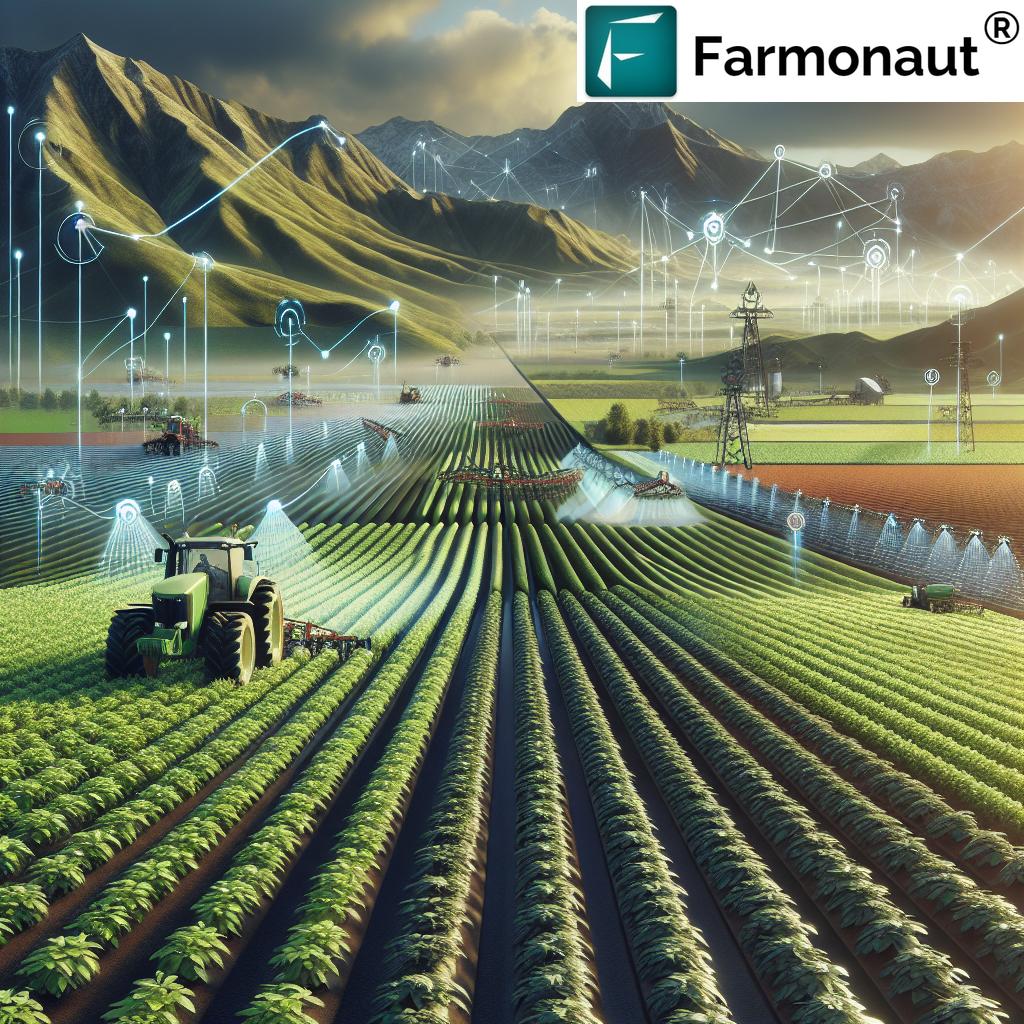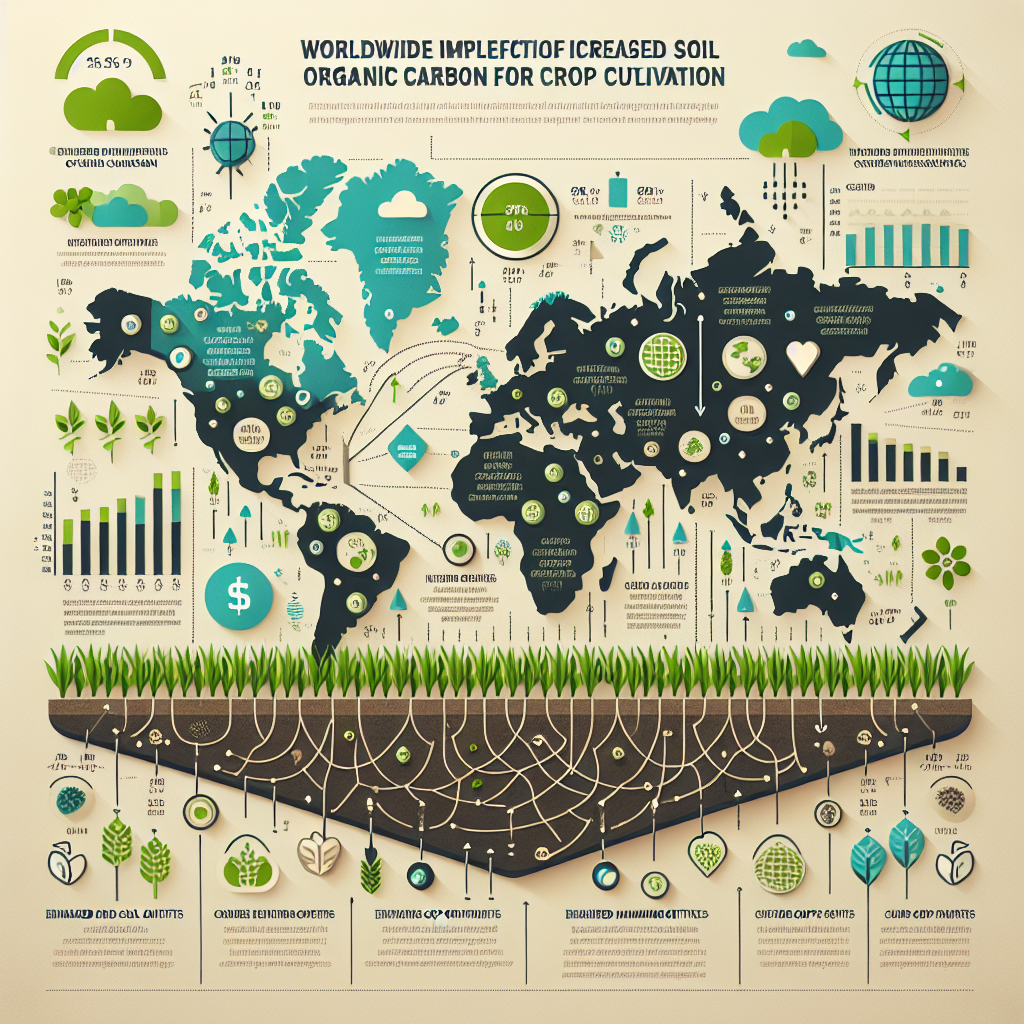Agriculture Scheduling Software: 5 Powerful Tools for 2025
In the rapidly evolving agricultural landscape of 2025, digital transformation is no longer a futuristic vision—it is reality. As the sector faces challenges ranging from climate unpredictability and resource optimization to soaring input costs and demand for transparency, technology emerges as the key enabler for modern farming. Among the myriad digital solutions reshaping agribusiness, agriculture scheduling software claims a pivotal role—streamlining planning, management, and precision in every stage of farm operations.
This in-depth blog explores the core pillars of next-gen agriculture job scheduling tools, including agriculture contractor job scheduling, agriculture shop software, agriculture production software, and UAV agriculture software. We’ll compare the five most powerful solutions for 2025, explaining how they deliver measurable productivity gains, optimize resource use, and empower both smallholders and large-scale agribusinesses to thrive.
Focus Keywords: agriculture scheduling software, agriculture contractor job scheduling, agriculture shop software, agriculture production software, UAV agriculture software, software, agriculture, job, management, tracking, UAV, 2025, productivity, precision, technologies, digital, planning, integration
Agriculture Scheduling Software: Streamlining Farm Operations
At the heart of advanced farm management in 2025 lies agriculture scheduling software. This critical tool enables farmers to plan, monitor, and coordinate various operations throughout the cropping cycle—from planting and irrigation to harvesting and equipment maintenance. Modern platforms offer a clear, visual calendar, typically integrated with real-time weather data and alert systems that proactively notify users about potential overlaps, critical tasks, or risks.
The rapid adoption of digital scheduling tools is driven by a need to optimize labor deployment, reduce downtime, and avoid costly operational overlaps. In 2025, leading agriculture scheduling software platforms incorporate AI-driven predictive analytics, enabling proactive decision-making based on historical trends, market forecasts, and live sensor data. These platforms:
- Synchronize all farm activities on one dashboard
- Provide AI-powered recommendations for optimal planting and harvest windows
- Alert managers about risk factors like weather, pest outbreaks, or delayed operations
- Integrate with inventory, fleet, and UAV systems for total operational control
This streamlined, connected approach ensures all manual records and guesswork are replaced by a centralized, data-driven scheduling platform, empowering farmers to optimize every resource and boost productivity.
Why Is Scheduling Software Essential for Modern Agriculture?
- Complex Changes: The farm landscape in 2025 requires rapid responses to climate and market changes.
- Labour and Resource Optimization: Efficient allocation across jobs prevents resource wastage and labor bottlenecks.
- Consistent Quality: Centralized schedules ensure timely operations, improving crop quality and traceability.
- Improved Foresight: Integrated systems offer actionable insights, forecast risks, and enhance decision-making.
Key Features of Advanced Agriculture Scheduling Software
- Visual Calendars showing all planned and completed activities
- Automated Alerts & Reminders for upcoming or overdue tasks
- Integrations with IoT Sensors for real-time updates on soil moisture, equipment status, or crop health
- Multi-User Collaboration for assigning jobs, tracking progress, and communicating with internal/external teams
- Data-Driven Recommendations leveraging AI-ML models for optimal task scheduling
To maximize impact, these tools are increasingly paired with blockchain traceability:
Explore how traceability solutions ensure transparency from farm to fork.
Agriculture Contractor Job Scheduling: Coordinating External Labor
With the increasing specialization and scale of modern agriculture, many farms rely on external contractors for essential tasks such as large-scale planting, spraying, harvesting, equipment maintenance, and crop protection routines. Efficiently managing contractor schedules is now critical for maintaining production timelines and controlling costs.
Agriculture contractor job scheduling software introduces robust solutions for assigning jobs, tracking job progress, and communicating instantly with external teams. Most platforms for 2025 offer powerful features such as:
- GPS-enabled workforce tracking for accountability on site
- Automated invoicing and contractor payment systems
- Real-time updates on job status, captured by mobile devices or wearables
- Customizable job templates and schedules to fit varying seasonal workloads
- Data sharing with production tracking software and farm management platforms
For managers of medium and large farms, automated contractor scheduling reduces bottlenecks, prevents double-bookings, and ensures timely coordination between in-house and external workers. This is essential for tasks where timing—such as spraying before rainfall or harvesting at optimal crop readiness—can have a massive impact on yields and quality.
Integrated contractor job scheduling systems also power advanced fleet management. Fleet tracking optimizes equipment use and fuel costs—learn more.
Modern Scheduling vs. Legacy Methods
- Legacy Methods: Paper notebooks, spreadsheets, and phone/text communication—prone to confusion, lost records, and delays.
- Modern Tools: Centralized software for live updates, automated reminders, and performance reporting—improving transparency, efficiency, and accountability.
For operations aiming to scale or meet sustainability certifications, robust job scheduling underpins every step of their success.
Agriculture Shop Software: Managing Equipment and Supplies
Behind every productive farm is a well-orchestrated logistics and maintenance system. Agriculture shop software addresses the complex demands of managing equipment, input inventories, supplies, and maintenance schedules. Without efficient scheduling and inventory tracking, machinery downtime, delayed inputs, and fuel wastage can cripple a growing season.
Cutting-edge shop management platforms offer a centralized platform for all shop operations, including:
- Maintenance scheduling and automated reminders for machinery, irrigation pumps, fleet vehicles, and drones
- Real-time inventory tracking for fertilizers, seeds, protective equipment, and spare parts
- Purchase order management to streamline procurement and replenishment
- IoT integration for live condition monitoring of critical machines and stock levels
- Reporting tools that analyze usage patterns and highlight aging assets
By maintaining precise control over shop inventory, ensuring proactive maintenance scheduling, and detecting issues before they lead to breakdowns, these platforms reduce downtime, minimize waste, and cut costly emergencies. This allows farmers and managers to focus on high-value, high-impact tasks.
Managing fuel usage and shop supplies is particularly vital. Integrated software solutions often connect to environmental impact modules—like Farmonaut’s carbon footprinting dashboard—for a holistic picture of agricultural sustainability across operations.
How IoT and Integration Redefine Shop Management
- IoT sensors update software in real-time with machinery health, location, and workload stats
- End-to-end digital tracking of input stores allows for accurate re-orders and reduced spoilage
- Predictive analytics identify the optimal time for service or replacement, maximizing equipment life
For farmers looking to manage environmental impact and demonstrate compliance, shop software is a bridge to precise, sustainable, and profitable operations.
Agriculture Production Software: Tracking Yields and Quality
After meticulous scheduling and daily operations, the most successful farms in 2025 rely on agriculture production software to track yields, quality, and resource use at an unprecedented level of detail. Connected with IoT networks, sensors, and UAV data streams, these solutions compile integrated dashboards that illuminate every aspect of production.
Production tracking platforms empower agricultural managers to:
- Monitor crop health and yield potential by integrating data from field sensors and satellite imagery
- Assess quality against regulatory standards, sustainability certifications, and market requirements
- Ground-truth satellite/UAV data with physical sampling, enabling data-driven harvest plans
- Benchmark progress field-by-field, season-to-season
- Generate audit-ready reports for compliance and traceability
With data integration from multiple sources, farms can:
- Reduce input waste and energy costs by aligning inputs to real-time crop needs
- Strengthen sustainability credentials through traceable production histories
- Enhance market access for certified, high-quality, or low-emissions produce
Production software modules form a vital part of Farmonaut’s blockchain-based traceability offerings. Explore how traceability helps secure premium market access and transparent supply chains.
Data-driven platforms serve as both a management layer and a compliance record—future-proofing operations, especially where access to loan finance relies on verified, digital records. Need Crop Loan or Insurance via satellite verification? Visit Farmonaut’s Crop Loan & Insurance solution to learn about secure, hassle-free lending for 2025.
UAV Agriculture Software: Revolutionizing Precision Farming
Among all agri-tech revolutions, UAV (Unmanned Aerial Vehicle) agriculture software is the most transformative for precision farming. Drones, equipped with multispectral sensors and AI-vision capabilities, scan fields to capture ultra-high-resolution images revealing:
- Crop health and stress signals invisible to the human eye
- Canopy moisture levels, pest infestations, nutrient deficiencies
- Early weed and disease outbreaks
- Plant growth variability and missing plant detection
Specialized UAV agriculture software processes this data into actionable maps and detailed reports. This empowers producers to:
- Apply variable-rate inputs—fertilizers, irrigation, or pesticides—minimizing waste
- Trigger automated scheduling of field teams and interventions, integrating directly into broader farm management systems
- Carry out compliance checks and crop counting for insurance or loan verification purposes
In 2025, true farm optimization involves an integrated platform fusing UAV insights, satellite data, IoT monitoring, labor scheduling, and production reporting.
Why UAV Agriculture Software Stands Out
- Autonomous operations: Pre-programmed flight paths for coverage without human error
- Live sync with scheduling software: Automatically add jobs when UAV detects crop risk or maintenance need
- AI-powered image analytics: Early detection of threats, faster than ground scouts
- Blockchain for data integrity: Secure storage of aerial data for audits, insurance, and compliance
UAV Technologies Meet End-to-End Digital Agriculture
Farmonaut’s broad UAV-ready APIs and mobile/web platforms are designed to interface with advanced drone analytics, as well as traditional soil and crop management tools—empowering farmers, businesses, and governments to act swiftly and precisely in every season.
Want instant UAV integration for your agribusiness?
Find out more with Farmonaut’s Android, iOS & Web Apps, fully compatible with major drone data formats and satellite streams.
Comparative Table: 5 Best Agriculture Scheduling Software for 2025
Choosing the right agriculture scheduling software is pivotal for maximizing farm productivity and operational efficiency in 2025. The following comparison helps you assess which platform best fits your unique requirements—including integration, UAV capability, and ROI.
| Software Name | Key Features | Integration Capabilities | UAV Support | Estimated Productivity Gain (%) | Approximate Cost (per season/year) |
|---|---|---|---|---|---|
| Farmonaut® |
|
|
✔ Full (image, task, and compliance modules) | 28–42% | $120–$780/season (scaled plans) |
| Trimble Ag Software |
|
|
✔ (Basic UAV overlay for scouting) | 18–29% | $750–$1,500/year |
| Granular |
|
|
Partial (UAV scouting manual upload) | 13–22% | $1,120/year |
| Agworld |
|
|
Partial (UAV mapping import) | 13–18% | $600–$1,000/year |
| FarmLogs |
|
|
No (UAV integration via manual upload) | 10–16% | $250–$540/year |
Note: All costs and productivity gains are estimated for 2025 and may vary by region, scale, and custom integration.
Looking for affordable, scalable satellite-powered farm management? See Farmonaut’s pricing and modules for all farm sizes.
Farmonaut: Satellite-Driven Transformation in Digital Agriculture
We at Farmonaut are dedicated to democratizing advanced satellite, UAV, and digital solutions for every farm, business, and government worldwide. Our multi-layered agriculture scheduling software platform incorporates:
- Satellite-based monitoring powered by multispectral imagery and AI, supporting NDVI crop health, soil moisture, and production planning—all accessible via user-friendly web, Android, and iOS apps.
- Real-time advisory (Jeevn AI) providing custom strategies for farming, weather, and risk management—integrated directly into operational schedules and dashboards.
- Blockchain-based traceability for supply chain transparency, regulatory compliance, and premium market access—see our traceability solutions.
- Fleet/resource management for precision deployment of labor, machinery, and logistical assets—explore how we optimize farm fleets.
- Environmental tracking, including carbon footprint monitoring, to help farms demonstrate sustainability and secure climate-smart finance.
Our unique business model is designed for scalability—from smallholder farms to large agribusinesses and governments. By providing real-time, API-driven data and subscription pricing, we help the entire agricultural ecosystem make decisions with clarity, confidence, and efficiency.
We are committed to the future of digital agriculture, actively supporting fleet managers, agri-processors, and financial institutions with verified digital records, remote audits, and scalable compliance documentation.
Frequently Asked Questions (FAQ)
-
What is agriculture scheduling software, and why is it essential for farms in 2025?
Agriculture scheduling software is a digital tool that helps farmers and agribusinesses plan, coordinate, and monitor all farm activities—such as planting, irrigation, harvesting, and maintenance. It improves efficiency, reduces errors, and enables the integration of real-time data from weather, equipment, and production systems. In 2025, it’s critical for operational visibility, resource optimization, and meeting compliance or sustainability targets.
-
How do contractor job scheduling solutions support large and multi-site farms?
Contractor job scheduling platforms offer tools to assign tasks to external teams, track progress via GPS or mobile inputs, and manage automated invoicing. They enable seamless coordination, reduce management bottlenecks, and ensure that tasks are completed on time, reducing operational risks and costs—essential for large farms or companies relying on seasonal labor.
-
What are the main benefits of agriculture shop software?
Shop software centralizes the management of machinery, input inventories, maintenance routines, and procurement. With IoT integration, it enables predictive maintenance, real-time usage monitoring, and accurate supply ordering—preventing costly breakdowns and ensuring critical resources are always available.
-
How does agriculture production software help in quality assurance and sustainability?
Production software integrates yield measurement, soil monitoring, and sensor/UAV data to provide a complete picture of crop health and output. This helps demonstrate compliance, achieve traceability, reduce waste, and improve market access for high-quality or sustainably-grown produce.
-
How do UAV and drone technologies integrate with agriculture scheduling software?
UAV agriculture software processes drone-generated data to detect crop stress, diseases, and variability. Integrated scheduling tools then automatically assign targeted interventions—such as spraying, scouting, or harvesting—maximizing resource efficiency and protecting yields.
-
Why choose Farmonaut for agricultural software solutions?
Farmonaut offers an integrated, satellite-based platform covering real-time crop monitoring, AI advisory, blockchain traceability, fleet/resource management, and environmental impact tracking. It is affordable, scalable, and accessible via web, Android, iOS, and API—supporting everyone from smallholders to large enterprises and financial institutions seeking reliable, data-driven agriculture.
-
Where can I access Farmonaut’s platform?
The platform is available via Web, Android, and iOS apps. APIs and developer documentation are available at Farmonaut API Docs.
Conclusion
As the agricultural industry embraces a digital-first paradigm in 2025, the convergence of agriculture scheduling software, contractor job scheduling, shop management, production tracking, and UAV agriculture software forms the backbone of modern, sustainable farm operations. These integrated platforms bring unmatched efficiency, precision, and foresight, empowering farmers and agribusinesses to operate proactively in a dynamic, competitive environment.
We at Farmonaut are advancing this revolution by offering affordable, scalable solutions accessible on any device and compatible with both traditional and next-generation agri-tech. With our platform’s synergy of satellite, AI, and blockchain, we ensure that every farm—from smallholder plots to vast agricultural enterprises—can optimize productivity, enhance quality, and demonstrate transparent, responsible agriculture.
Ready to elevate your operations for the future? Start your journey with Farmonaut’s digital agriculture platform today and harness the full potential of next-generation farm management in 2025 and beyond.













